Discussion
Transnational connections of the Nordic RWE groups have been a constant feature throughout history, both in ideas and practices. The ideas regarding pan-Nordic cooperation were put into practice in the 1930s. Especially salient was the transnational aspect that arose during the Cold War period because internationalization provided an opening for domestically marginalized and stigmatized movements (Kotonen, 2022). The NMR, with its cross-border activities, sets rather seamlessly into a historical continuum. Furthermore, it is not only at the practical level collaboration where we can see continuities.
The idea of a common Nordic racial origin has historically been one central cultural element of the RWE movements, which also extends beyond Nordic countries. These ideas, combined with the idea of a white resistance against multiculturalism, have brought together national socialist underground groups. Although many themes have remained the same, certain ideological and strategic reorientations have also taken place. Stigma of Hitler’s movement and the Second World War caused trouble for the movement, so relaunching activism after the Second World War was burdensome. Some transnational projects, like the Malmö movement founded in 1951, abandoned explicit biological racism and mobilized under the umbrella of anticommunism, promoting the idea of a common, exclusive European culture. The focus on culture instead of race was even more manifest in anti-Muslim groups created under the concept of a counterjihad after 9/11. New communication channels, internet, and social media helped these movements spread and mobilize across borders.
As shown also in their online propaganda, history matters also for the contemporary RWE groups and movements in the Nordic countries, and sometimes, they take a point of reference even from the prewar period. A recent example of this is Blue-Black Movement in Finland, which will take part in parliamentary elections spring 2023. Its visual image is almost a carbon copy of the Patriotic People’s Front (PPF) from the 1930s, and the name has been adopted from the PPF youth front. Recently, in Swedish elections, the party Alternativ för Sverige used a layout and slogans borrowed from the early 1980s RWE group Bevara Sverige Svenskt. For these groups, historical imagination is a key reference point, stirring memories from a period when the country was not multicultural and radical nationalism was an accepted ideal.
References to the 1930s also serve to remind of times when RWE movements had real political influence. Politically marginalized, the contemporary movements may only rarely influence the political decision making. Here, these movements stand in stark contrast with the RWE movements of the 1930s and 1940s, especially in Finland and Norway. In the former, the PPF was a part of the war cabinet, and its predecessor, the Lapua movement, maintained extraordinary influence when pressuring government and parliament into passing anticommunist legislation. In Norway, although marginal before the war, Quisling’s Nasjonal Sammling gained ruling position with the help of German occupiers.
Organizational forms are changing
Considering the organizational forms, historically, RWE groups and movements have followed the Führerprinzip and have been built upon an authoritarian top-down model. Although some current groups, especially the NRM, are still organized hierarchically, more often, we do not see that kind of structure but instead loose networks and individual activists, occasionally with broad social media presence or franchise-type organizations like Soldiers of Odin. Even very local groups may be also connected globally. This obviously presents challenges for the research as well, which has, especially historically, focused much on organizations and leading individuals. A cultural turn is indeed needed in this respect, although, as our review also shows, this has already happened to some extent. This is not to say that organizations do not matter anymore—they are still important, among others, in accumulating ideas and propagating them—but the focus should at least be in the ideas they represent. The ideas, unlike forms, travel also into the mainstream.
However, forms of public RWE activism tend to be similar year after year. Marches, demonstrations, and other ritualized events are, alongside with culture, what knits them together. NRM leader Simon Lindberg speaking in Helsinki in an Independence Day event in 2017 formally organized by the Soldiers of Odin but, in practice, arranged by a proscribed Finnish NRM chapter—bypassing the irony that realizing their goals would mean an end of Finland as an independent state—is one example of these connections realized through joint gatherings. Despite efforts to create unity, the differing historical experiences sometimes show also in current movements as internal frictions. This is clear, for example, in differing the ideas regarding nationalism and attitudes toward Russia between Finnish and Swedish parts of the NMR (see Sallamaa & Malkki, 2022). In Norway, the lessons drawn from the German occupation by the RWE groups has also split the milieu (Bjørgo, 1995). In a period arguably pregnant with hybrid influencing and disinformation, these differences matter. Without understanding the trajectories of these movements, based often on history, the countering and preventing measures may be mistargeted, and the threats posed by them may be overlooked.
Are we aiming correctly?
Following the overview of contemporary RWE in the Nordic countries and review of practices used to prevent RWE, we now have the data to reflect on how well the practices meet the nature of problem.
First, we look at the alignment between the threat assessments and occurrence of contemporary RWE in the north to see if there is a reasonable relation between the current situation and solutions or actions represented among the preventive practices.
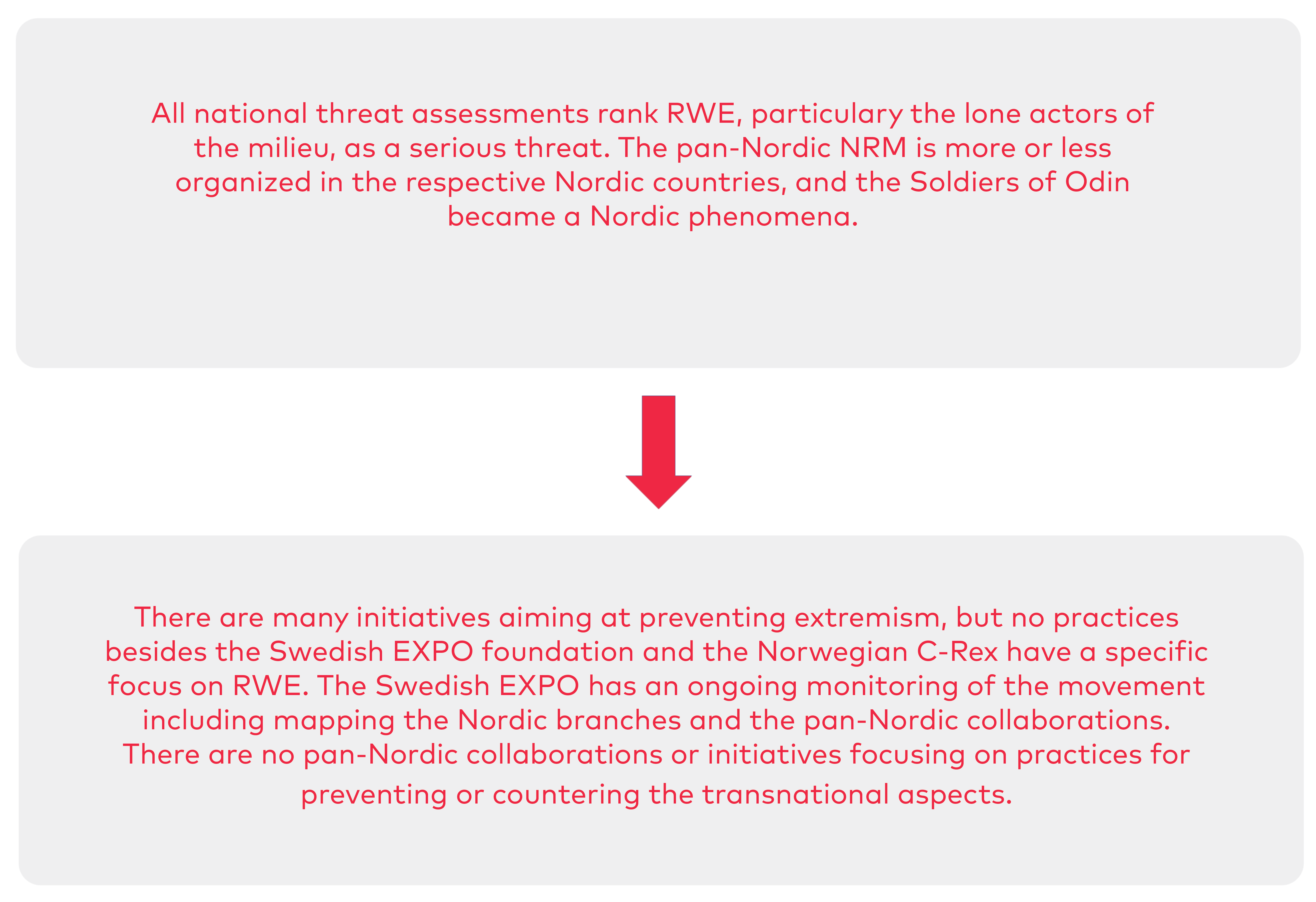
Hence, even though there is an obvious presence and aspirations among RWE movements to expand pan-Nordic cooperation, there are few resources focusing on countering this tendency. There are some Nordic resources for monitoring and studying RWE but a lack of sustainable solutions, practices, and initiatives that are actively aiming at prevention either at the national or pan-Nordic levels.
As the research review in the current report shows, even if there are gaps and room for improvement, important research is conducted, and insights have been afforded by studies on RWE in the north. If we agree that research and proven experience are relevant starting points for developing sustainable and efficient practices to prevent and counter RWE, there are reasons to investigate whether the research that has been conducted on the topic is being utilized in the development of practices.
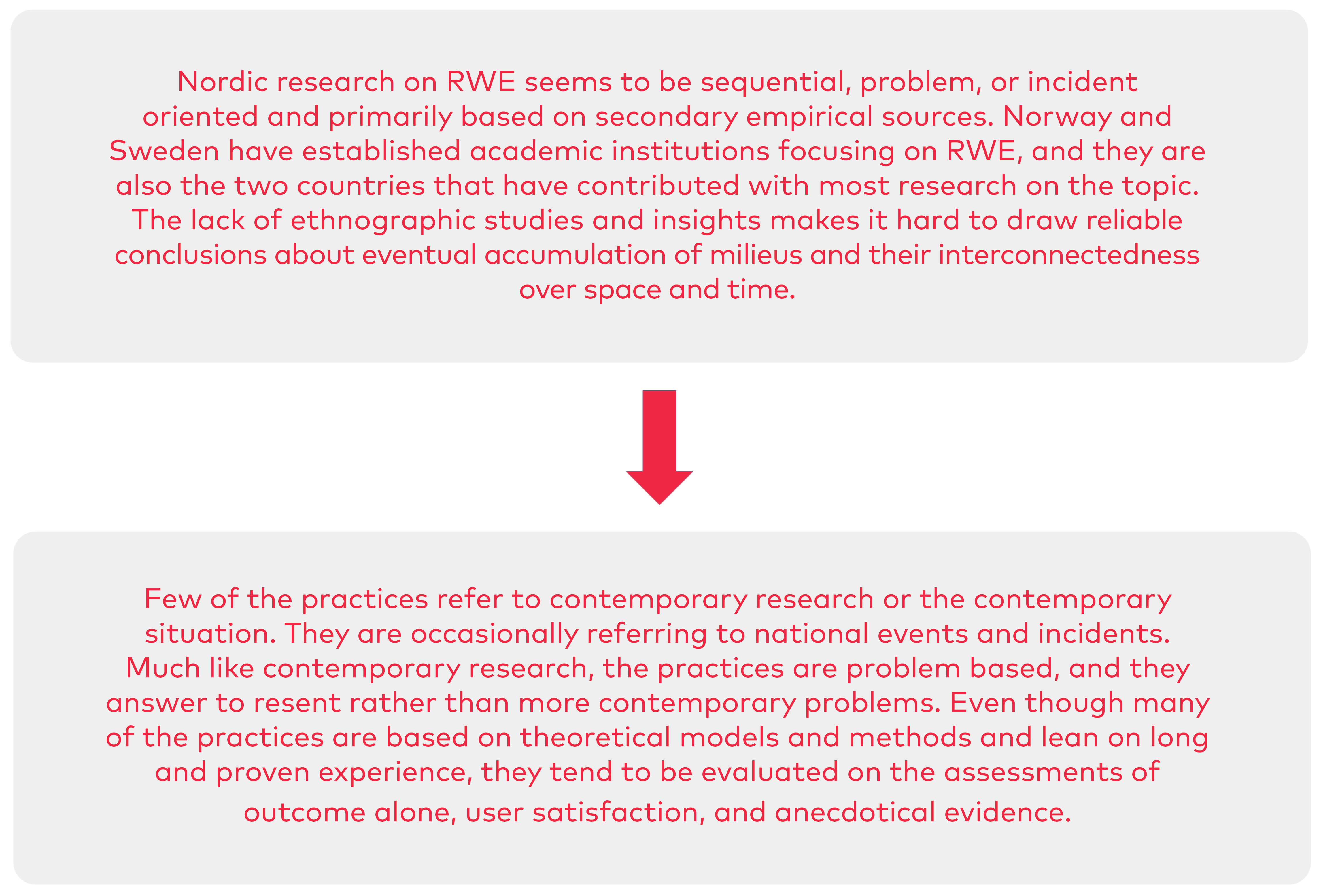
Thus, the research on RWE milieus and practices available and that give insights and important clues that can be used for developing practices is not being utilized. Instead, it is a common approach to use the practices that have been successful in handling other issues or situations in the past and transferring them into the realm of extremism.
Since the start of the millennium and initiation of the war on terror (Hodges, 2011), RWE has been accompanied by militant Islamism and, as the research review shows, there is also an increased anti-Muslim discourse in the RWE milieus. Following this, it is relevant to highlight whether this tendency is being met and what the relations between the two milieus might be, especially because it is common to design preventive practices aiming at preventing both kinds of extremism.
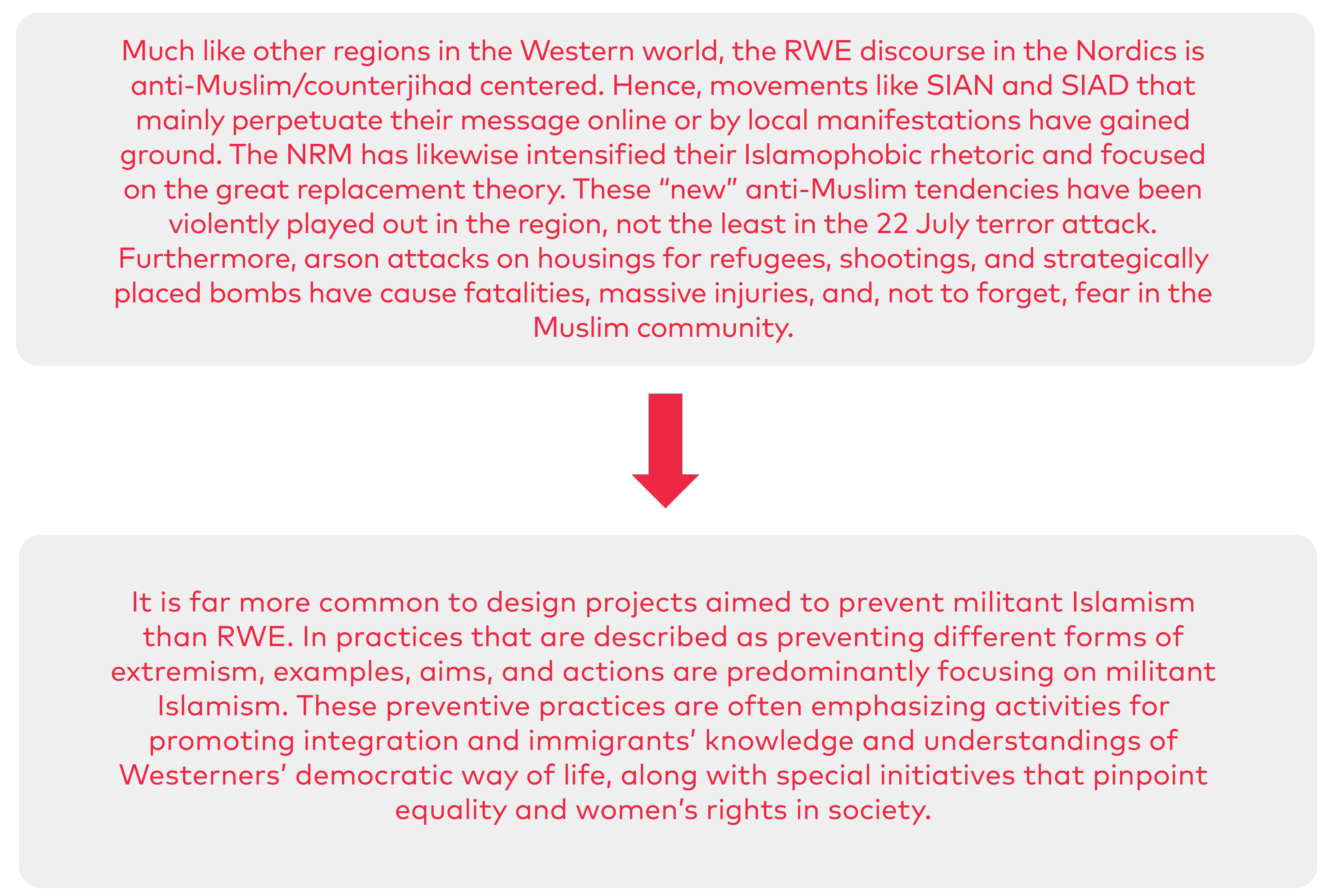
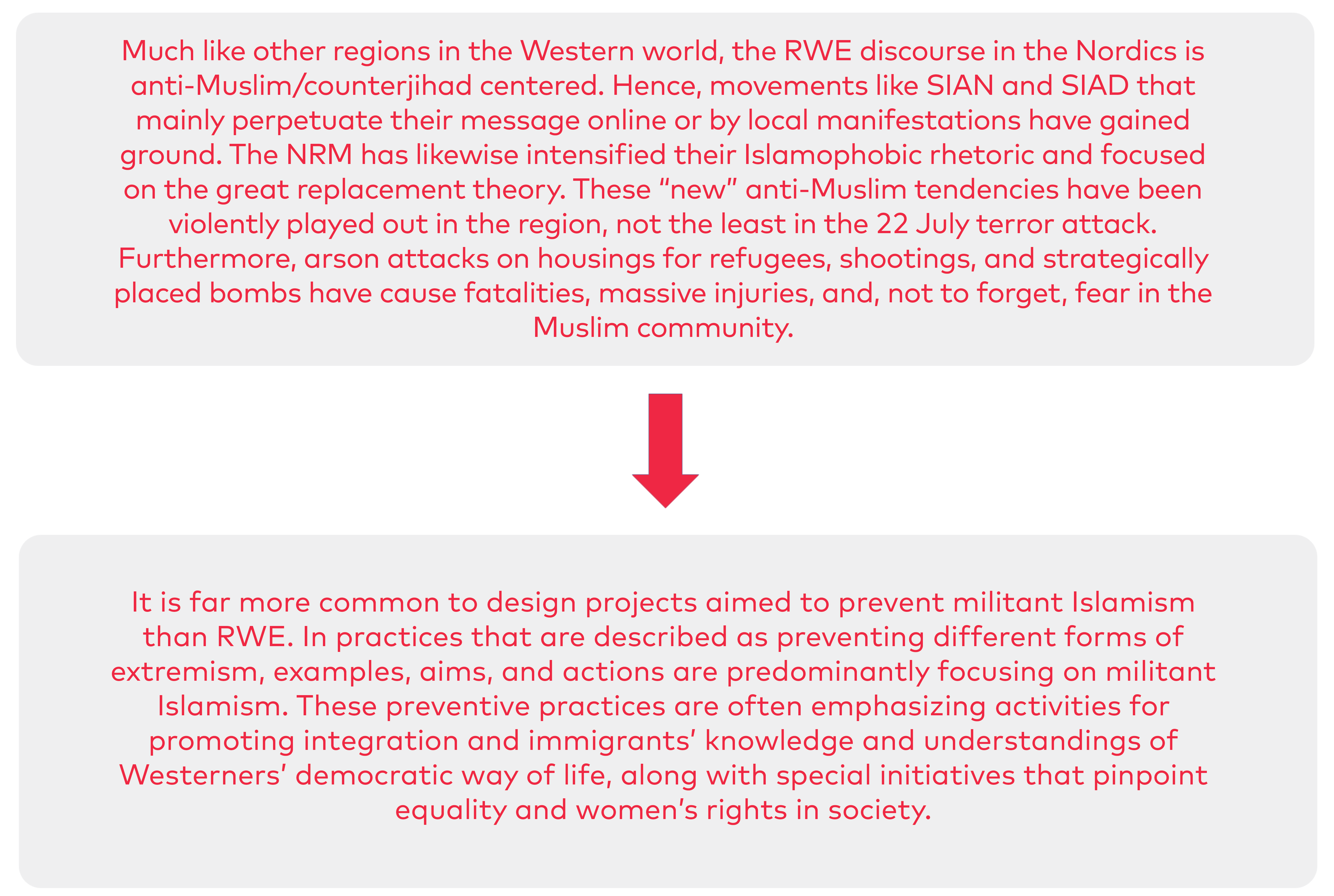
Thus, the attempt to lump different forms of extremism together to kill two birds with one stone have some unintended consequences. The prevention of RWE has fallen into the background of efforts to handle militant Islamism, while increasing Islamophobic attitudes are not gaining as much attention as the normalizing practices aimed at the Muslim community.
Besides needing to be focused on the correct milieu, prevention needs to target all types of individuals involved or consuming the narratives of extremism groups. Therefore, it is relevant to compare the demographics of right-wing extremists in order to focus on the relevant prevention practices.
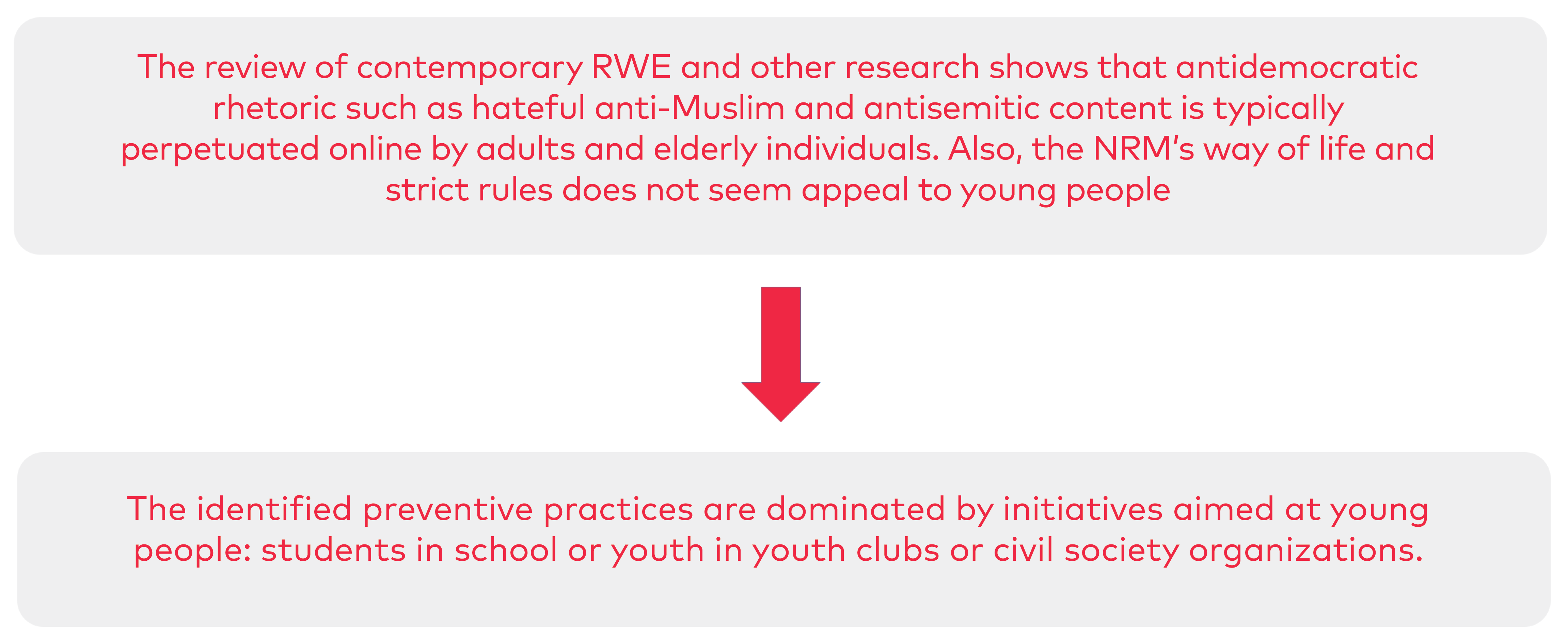
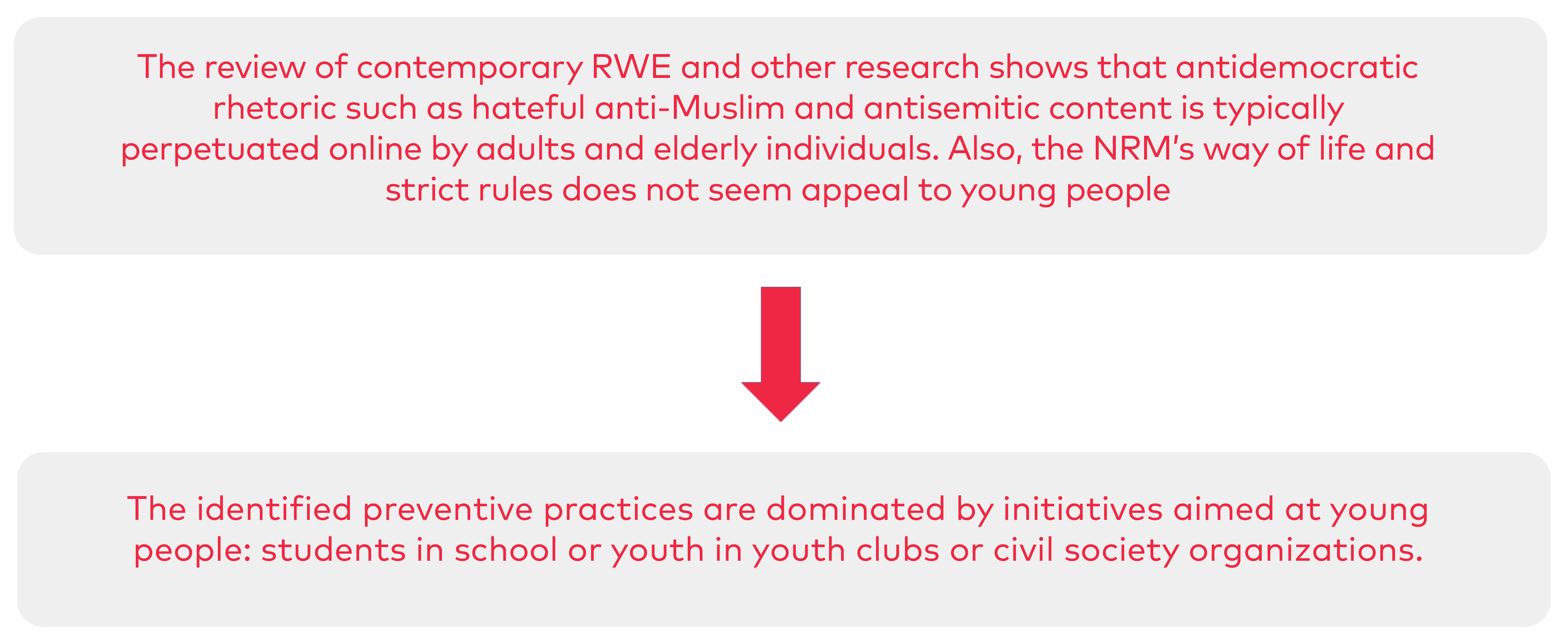
Accordingly, there is a lack of practices for preventing adults’ engagement in extremist activities. From a societal perspective, it is easier to impact the younger population because they are involved in institutions where professionals or designated leaders have a certain responsibility to maintain democratic practices and, therethrough, access to spaces and places where prevention can become an integral part of the ordinary activities. Contemporary prevention of RWE needs to expand its focus and target groups and, to a higher degree, focus on adults and the elderly.
The online sphere has rapidly gained ground, and extremist movements of all kinds have not been hesitant to exploit this medium to spread their ideas. Even if the online and social media forums sometimes are described as an opposite to real-life activities, what happens on the internet does not always stay on the internet.
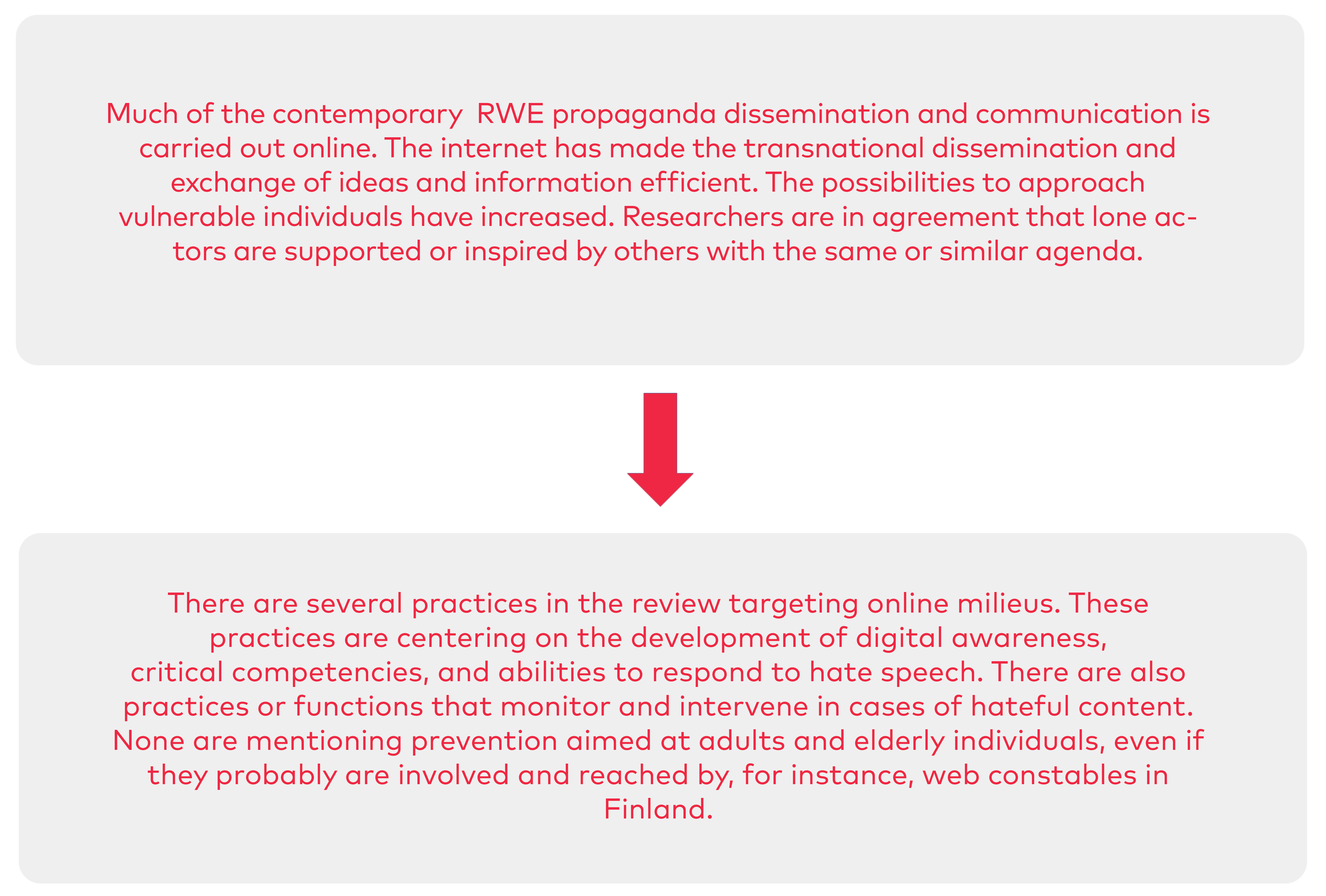
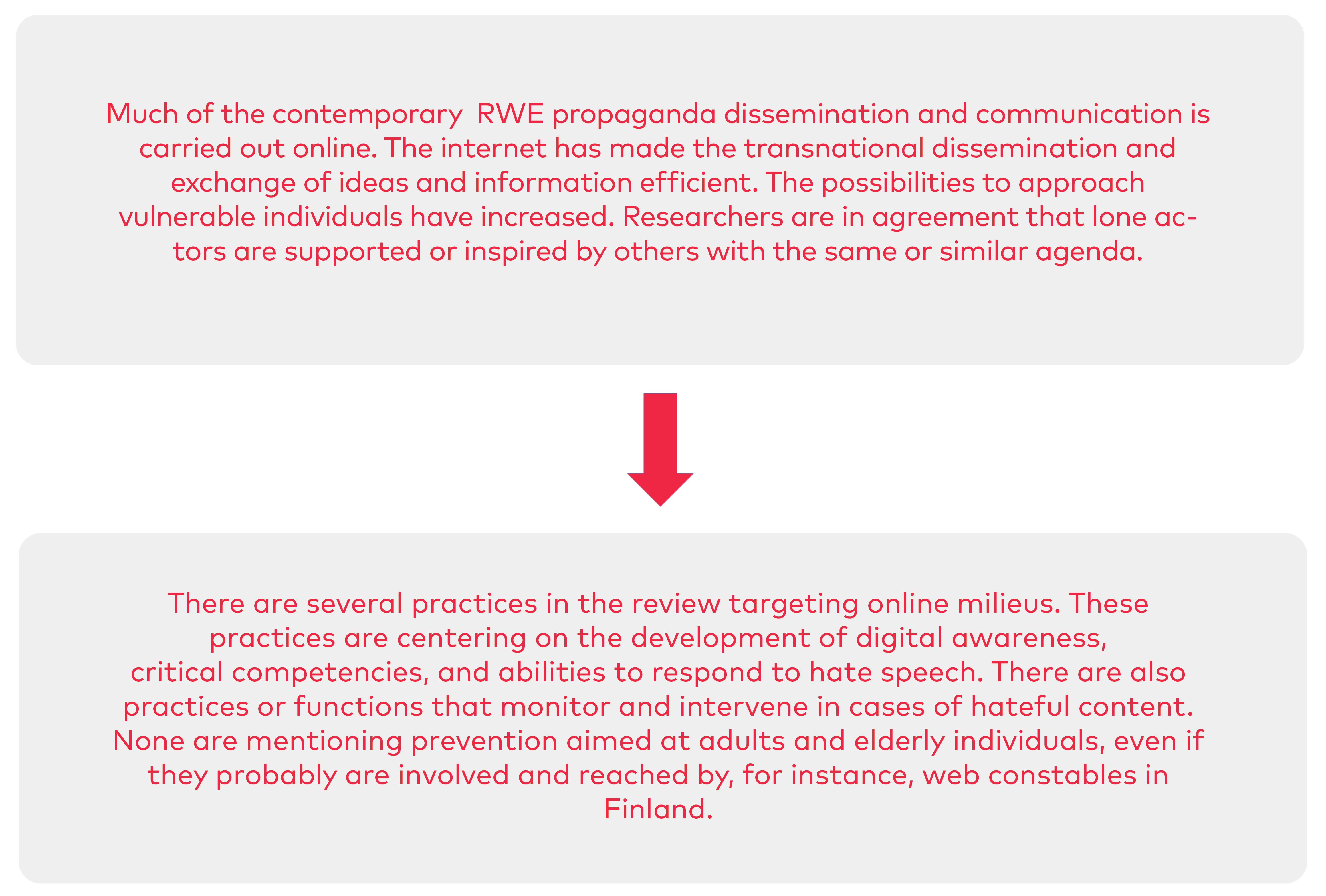
Accordingly, initiatives focusing online extremism are in place and under development in the Nordics, even if they are focusing on different aspects of either preventing or countering the issue. There are good reasons to cooperate and learn from each other, especially because online extremism communication and propaganda are not restricted by national borders and physical mobility.